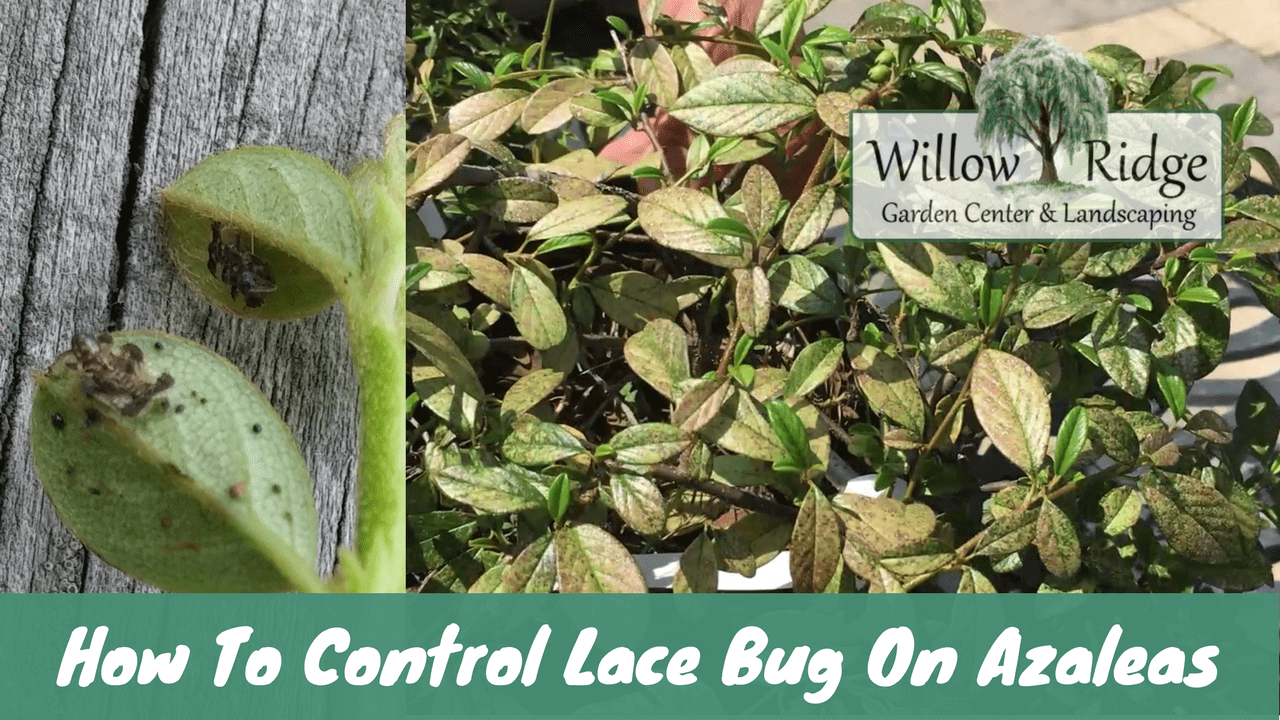Corythucha arcuata
Since its introduction from Japan in the early 1900s, the azalea lace bug has become a destructive pest of azaleas. Although this bug prefers evergreen azalea varieties, it will infest deciduous varieties. Mountain laurel can also become infested. The smooth, white egg of the lace bug, which measures approximately 0.4 mm by 0.8 mm, is flaskshaped with the neck to one side. It is usually deposited in the underside tissue of a young leaf along the mid-rib or large vein. Each egg is inserted in the tissue with its neck slightly about the leaf surface. Female lace bugs lay groups of eggs on the underside of the leaves in September and October. These eggs overwinter and hatch during March and April. The populations build from spring through autumn with about four generations possible. A large population of lace bugs can be established during July, August and September. It is quite possible to find all stages of the lace bug together under a leaf during this time. The adult lace bug is 1/8 inch long and 1/16 inch wide. It has lacy wings with brown and black markings and light brown legs and antennae. The young nymph lace bug is nearly colorless at hatching but soon turns black and spiny. It sheds its outer skin six times and ranges in size from 0.4 mm to 1.8 mm before becoming an adult. Injury to the plants is caused by nymphs and adults as they extract sap from the under surfaces of the leaves. The damage appears as spotted discoloration or bleaching of the upper surfaces of the leaves. In severe infestations, the leaves become almost white, many of them drying completely and dropping off. The undersides of the leaves are also disfigured by the black, dry, shiny excrement and cast skins of the insects
Adult lace bugs are about 1/8 inch (3 mm) long with an elaborately sculptured dorsal (upper) surface. The expanded surfaces of their thorax and forewings have numerous, semitransparent cells that give the body a lacelike appearance, hence the name “lace bugs.” The wingless nymphs are smaller, oval, and usually dark colored with spines. Adults and nymphs occur together in groups on the underside of leaves.
Native species named after their host plants include the California Christmas berry tingid (Corythucha incurvata), ceanothus tingid (Corythucha obliqua), and western sycamore lace bug (Corythucha confraterna). The introduced avocado lace bug (Pseudacysta perseae) is a pest of avocado(Persea americana) and camphor tree (Cinnamomum camphora).
Adult lace bugs are about 1/8 inch long with an elaborately sculptured thorax and forewings that form an expanded cover over their body. The adult thorax and forewings have tiny clear cells that form a lacelike covering, hence the name “lace bugs.” Many lace bugs are multicolored with a distinctive, species-specific pattern of a dark, pale, and clear lacelike areas. The wingless nymphs are smaller, oval, and commonly have body spines. Adults and nymphs occur together in groups on the underside of leaves.
LIFE CYCLE
Lace bugs develop through three life stages: egg, nymph, and adult and have several generations a year. Females insert tiny, oblong eggs in leaf tissue and cover them with dark excrement. Nymphs (immatures) develop through about five, increasingly larger, instars (growth stages) over a period of weeks before maturing into adults. Lace bugs can overwinter as eggs in leaves on evergreen hosts and as adults in protected locations, such as under bark plates and fallen leaves and other debris beneath host plants. All life stages can be present throughout the year on evergreen hosts in areas with mild winters.
DAMAGE
Lace bug adults and nymphs feed on the underside of leaves by sucking fluids from plants’ photosynthetic tissues. This causes pale stippling and bleaching that can become very obvious on the upper leaf surface by mid to late summer. Adults and nymphs also foul leaves with specks of dark, varnishlike excrement; and this excrement sometimes drips onto pavement and other surfaces beneath infested plants. Certain other true bugs and thrips also produce leaf stippling and dark excrement. Mites also stipple leaves. Mite infestations usually can be distinguished by the absence of dark excrement and sometimes by the presence of mite cast skins and fine silken webbing. Examine the lower leaf surface, using a magnifying lens if necessary, to identify what type of pest is causing the damage.
Lace bug feeding is not a serious threat to plant health or survival. Prolonged high populations of lace bugs may cause premature drop of some leaves and a modest reduction in plant growth rate. On avocado premature leaf drop may lead to sunburn of some fruit and a subsequent reduction in fruit yield.
MANAGEMENT
Tolerate lace bug damage where possible. The injury is mostly aesthetic (cosmetic) and does not seriously harm plants. Provide proper cultural care so plants are vigorous. Conserve predators and parasites and apply cultural controls as discussed below to help suppress populations of at least some species of lace bugs.
No treatment will restore stippled foliage, which remains until pruned off or replaced by new growth. If intolerable damage has occurred, during subsequent years inspect plants about once a week beginning in late winter. Take action when lace bug nymphs become abundant and before damage becomes extensive. A forceful stream of water directed at the underside of leaves beginning early in the season, when nymphs are the predominant life stage, and repeated at intervals can help to suppress, where feasible, lace bug populations on small shrubs. Various insecticides are available for use on landscape plants, but these products can adversely affect beneficial invertebrates and the environment.
Cultural Control
Grow plants that are well adapted to conditions at the site. Consider replacing plants that perform poorly or repeatedly experience unacceptable pest damage. Certain plant species growing in hot, sunny locations are more likely to be damaged by lace bugs. For example, azalea and toyon grown under partial shade experience less damage by lace bugs than when they are grown in locations more exposed to direct sunlight and higher temperatures. Provide adequate irrigation and otherwise provide plants with appropriate care.
On toyon and possibly other shrubs, lace bug survival during winter and subsequent damage in spring may be reduced by keeping soil beneath host plants bare during December through February, by shallowly cultivating the soil surface several times during this period, or using both practices. For example, during late fall rake away and compost leaves beneath lace bug host plants. If organic mulch is reapplied in spring, avoid using leaves from the same plant genus as mulch near that plant because it may harbor adult lace bug

